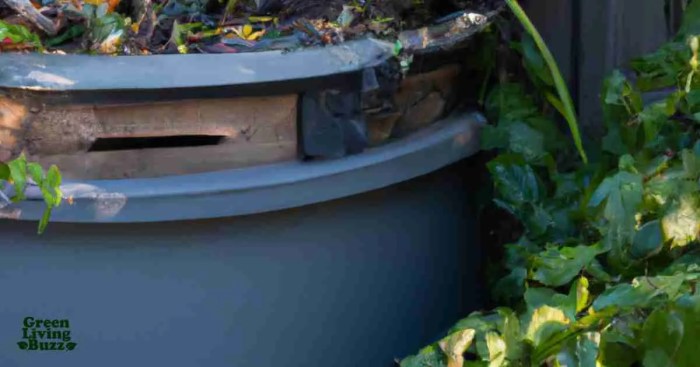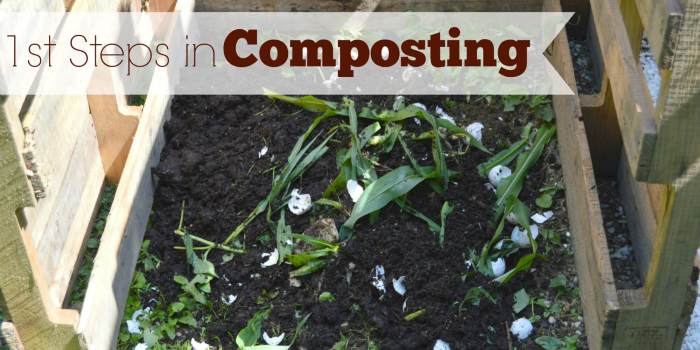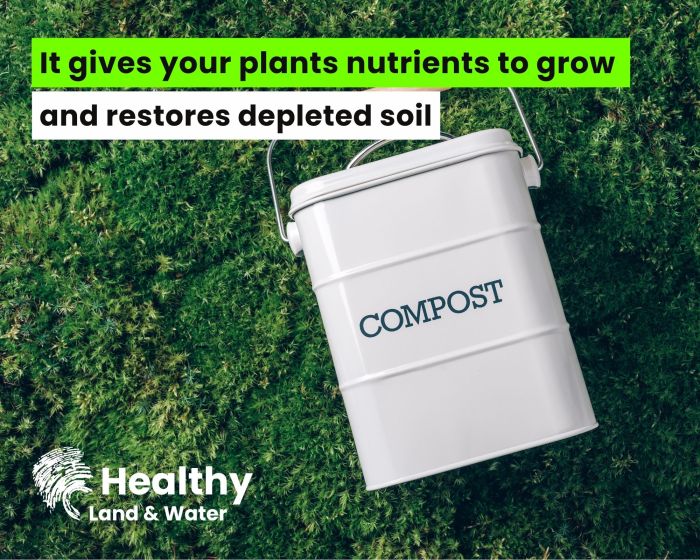Embark on a journey with ‘3 Steps to Composting at Home,’ where you’ll discover the beauty of sustainable living through simple yet impactful actions. Learn how you can reduce waste, improve soil quality, and make a positive environmental impact right from your backyard.
In this guide, we’ll explore the essentials of composting, from setting up your compost bin to maintaining the perfect compost pile for nutrient-rich soil. Get ready to dive into the world of composting and make a difference, one step at a time.
Benefits of Composting at Home

Composting at home offers numerous environmental benefits that can have a positive impact on both our immediate surroundings and the planet as a whole. By turning kitchen scraps and yard waste into nutrient-rich compost, we can significantly reduce the amount of waste that ends up in landfills.
Reduction of Waste
Composting helps divert organic materials such as food scraps, yard trimmings, and paper waste from landfills. These materials, when left to decompose in landfills, produce methane – a potent greenhouse gas that contributes to climate change. By composting at home, we can reduce the production of methane and lessen the burden on already overflowing landfills.
Improvement of Soil Quality
The compost produced from home composting is a natural fertilizer that enriches the soil with essential nutrients. It helps improve soil structure, water retention, and aeration, leading to healthier plants and increased biodiversity. By adding compost to your garden or yard, you can create a thriving ecosystem that supports plant growth and reduces the need for chemical fertilizers.
Getting Started with Composting

Starting composting at home is an eco-friendly way to reduce waste and create nutrient-rich soil for your garden. Here’s how you can get started:
To begin composting, you will need the following materials:
– A compost bin or container: This can be a simple DIY bin made of wood or a store-bought composting unit.
– Brown materials: Such as dried leaves, straw, and shredded newspaper.
– Green materials: Including fruit and vegetable scraps, coffee grounds, and grass clippings.
– Water: To keep the compost pile moist but not soggy.
– A pitchfork or shovel: For turning the compost and aerating it.
Setting Up a Composting Bin
To set up your compost bin, follow these steps:
– Choose a dry, shady spot in your backyard or garden for the compost bin.
– Layer brown and green materials in the bin, starting with a thick layer of brown materials at the bottom.
– Add water to the pile to moisten the materials, but be careful not to overwater.
– Turn the compost pile regularly to aerate it and speed up the decomposition process.
Tips for Maintaining the Compost Pile
Here are some tips to help you maintain a healthy compost pile:
– Keep a good balance of brown and green materials to ensure proper decomposition.
– Chop or shred large materials into smaller pieces to help them break down faster.
– Regularly turn the compost pile to aerate it and prevent it from becoming compacted.
– Monitor the moisture level of the compost pile and add water if it becomes too dry.
– Avoid adding meat, dairy, or oily foods to the compost pile, as they can attract pests.
Now that you have the materials and know how to set up and maintain a composting bin, you’re ready to start turning your kitchen scraps and yard waste into nutrient-rich soil for your plants!
Steps to Composting at Home

To successfully compost at home, there are three essential steps to follow. These steps involve creating the right environment for decomposition, ensuring proper aeration, and monitoring the balance of green and brown materials.
Importance of Balancing Green and Brown Materials
For effective composting, it is crucial to balance green and brown materials. Green materials, such as fruit and vegetable scraps, provide nitrogen, while brown materials, like dried leaves and cardboard, offer carbon. The right balance ensures the compost pile heats up properly, allowing microorganisms to break down the organic matter efficiently.
- Examples of Green Materials: Fruit and vegetable scraps, coffee grounds, grass clippings.
- Examples of Brown Materials: Dried leaves, straw, shredded newspaper, cardboard.
What Can and Cannot be Composted
While many organic materials can be composted, some items should be avoided to prevent issues such as pests or a foul odor. Here are some examples:
- Can be Composted: Fruit and vegetable scraps, eggshells, coffee grounds, yard trimmings.
- Avoid Composting: Meat and dairy products, oils and fats, pet waste, diseased plants.
Ending Remarks

As we wrap up our discussion on ‘3 Steps to Composting at Home,’ remember that every effort counts towards a greener planet. By following these simple steps, you’re not just composting; you’re fostering a more sustainable lifestyle and contributing to a healthier environment for all. Start composting today and watch your garden flourish with vitality and life.